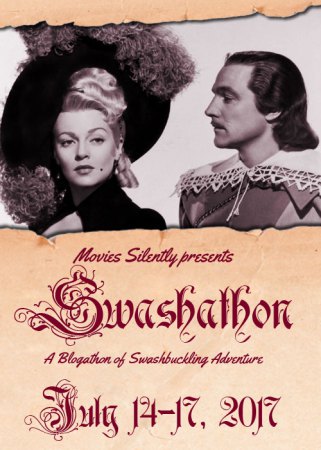 It’s the day of the Swashathon!
It’s the day of the Swashathon!
The day in which we celebrate adventure movies in which wits are sharp as rapiers and dialogues are snappy and furious, and action is, too.
You can find a full list of the Swashathon participants at The Movies Silently, that set up this party.
Or should we say this raid?
Adventurers, Arabian princes, pirates, outlaws…
And of course musketeers.
And Karavansara here is ready for a double feature, featuring the only two musketeer movies you need to watch in your life: Richard Lester’s The Three Musketeers (1973) and The Four Musketeers (1974).
Two movies that changed the industry. Here we go…
Believe it or not, 1973 The Three Musketeers had been pitched to Richard Lester as an adaptation of the Dumas novel featuring The Beatles in the titular roles. This was in the ’60s, and Richard Lester had directed the Fab Four in two movies already.
The project was shelved, but in 1973 Lester was finally able to shot the movie.
And with all my sympathy for the Fab Four1, the cast for the 1973 movie was simply wonderful.
And to that staggering roll call of stars, let’s add two that were left out in the trailer: Spike Milligan as M. Bonacieux, and Roy Kinnear as Planchet.
Wow.
Just wow.
Add to that the original score by Michel Legrand, who stole a page or two from Giuseppe Verdi, and Lalo Schifrin.
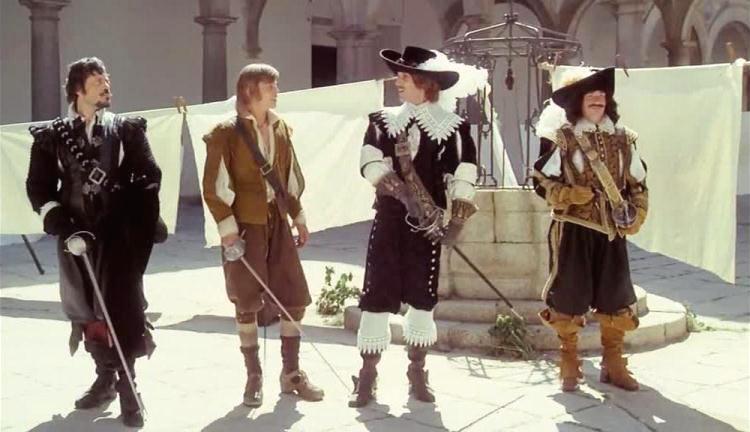
The story is too well-known for us to need a summary here: the Musketeers are members of the King of France’s Royal Guard. Cardinal Richelieu plots to discredit the queen. Much shenanigans (and duels! and chases!) ensue.
The script was handled by George MacDonald-Fraser, of Flashman fame and a fine writer of historical fiction and comedy.
And here is the catch – a lot of people think the Lester Musketeers were played for laughs, especially so because the producers presented the movies as all-out comedies.
And indeed, Lester was primarily known as a comedy director, and there’s a lot of comedy in the script, that on the other hand manages to remain really close to the Dumas original, and also painstakingly accurate where historical references are concerned.
In this sense, everything in the movie is historically perfect: the costumes, the props, the gadgets (that key ring!), the scenes, the fighting.
And of course the Dumas novel swings from comedy to drama and back – after all that’s why it’s a great novel – and Fraser, a Dumas fan, knew it.

There was only one problem, in the whole Lester/Fraser scheme: adapting The Three Musketeers would mean making a movie of no less than four hours.
A feat more suitable for David Lean than for Richard Lester, many thought.
And would ever a 1973 audience sit through four hours of swashbuckling adventure?
But the guys got to work, and while the movie was being shot, the director and production decided to go for a three-hours epic, complete with an intermission.
But production stretched over schedule, and so, to make it to the announced release date, they finally decided to split the film in two – The Three Musketeers and The Four Musketeers.
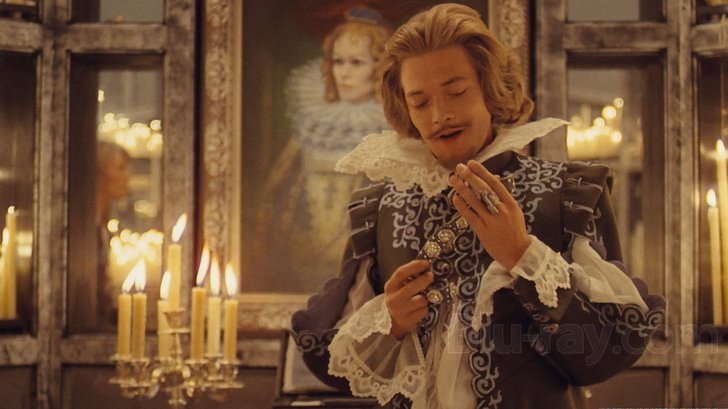
Which was all fine and jolly, but the actors had not been informed.
They actually discovered there would be two movies at the premiere, when they saw the trailer for The Four Musketeers tagged at the end of The Three Musketeers.
The cast was not pleased.
Not in the least2.
After all, cast and crew were being paid for one movie, but the production was actually selling two movies.
The legal dispute that followed led to what is today known as the “Salkind Clause” (from the name of the Musketeers’s producers) in an actor’s contract, that requires the exact number of movies being made to be put on paper.
The two movies – that actually and for obvious reasons play like one extended feature – are almost the template for the perfect historical adventure film.
Every piece is in the right place, and the actors are absolutely pitch-perfect in their roles – even if Lester wanted Malcom McDowell to play D’Artagnan, and that would have really sent all the meters through the roof.
McDowell and Reed in the same movie? Are you kidding?
But Michael York is excellent in the role of the country bumpkin as good with a sword as socially inept.
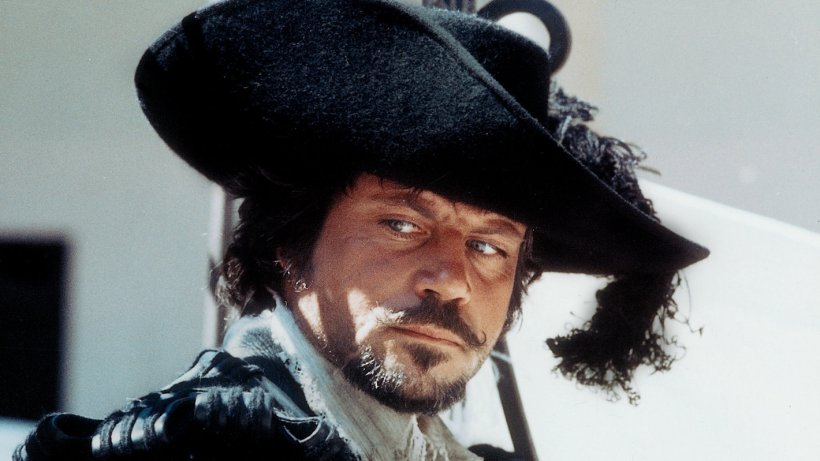
For me, of course, Oliver Reed steals the movie – his Athos (a role that had been originally offered to Charlton Heston, who instead went for the Cardinal) has the right mix of wine-drenched melancholia and tired swashbuckling insouciance. His swordfighting technique, which is sloppy and messy and all over the place, fits wonderfully the character, and is another sign of the quality of the script and the movie. And a nightmare for the stunt men, as apparently Reed tended to be “carried away” by the action, and was therefore a true hazard during the fights. Christopher Lee had been his fencing master, back in 1964, and often scolded Reed for breaking style (“It’s a sword, not an ax!”)
But choreography is so good each character has a different fencing style (or lack thereof), so that each fighting scene becomes actually an extension of the dialogue.
Even the fight between Faye Dunaway’s Milady and Raquel Welch wonderfully daft Constance was designed to be as brutal and violent as possible – so much so that when the take was done, Dunaway actually punched Welch in the face.
The brutality of the fights actually took its toll: Michael York had his leg cut in one duel and almost lost an eye in another, and finally had to stand in for his injured double (padding his jacket with the script to avoid further damage). Oliver Reed took a sword to the hand, while Frank Finlay was struck in the face by a two-by-four and burned in separate fight scenes.
Christopher Lee sprained a knee and pulled a shoulder muscle, and Raquel Welch sprained an ankle after falling, having been punched in the face by Faye Dunaway.

And through all this, Richard Lester was filming, with five cameras doing both long shots and details, and even a camera rolling during dress rehearsals. And this is probably the reason why the movie looks so good and so alive.
Its been forty-five years now, but the movies still play great.
Wonderful entertainment, great dialogues, excellent action, it looks and sounds like a million, and includes some of the best performances of a dream cast.
The Three Musketeers and The Four Musketeers are probably the peak of what we could call the modern swashbuckler movie – true, there’s no Flynn, no Fairbanks, no Colman in these, but you will not miss them at all.
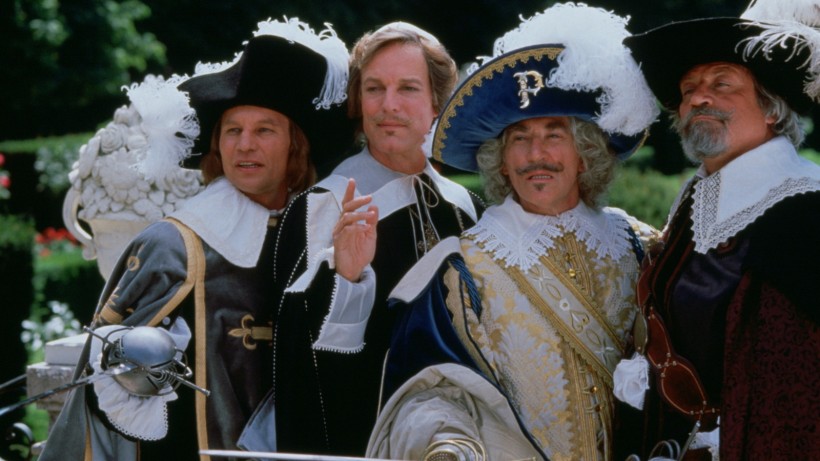
Oh, yes – there was a sequel, shot in 1989 with much of the same cast, and based – very loosely – on Twenty Years Later. It’s not so good as the originals, alas, but it’s still worth a look.


15 July 2017 at 23:55
That’s really interesting, about filmmakers making two movies from one. I can see why the cast would not be pleased.
There are a lot of movies in this blogathon that I’ve not seen. Here’s another one to add the to the list. Thanks!
LikeLike
16 July 2017 at 00:03
You are welcome.
It’s a great movie (or two of them), and I’m sure you might like it. Some gags have not aged well, but the overall construction remains superb.
LikeLiked by 1 person
16 July 2017 at 01:50
Thank you so much for joining in! Part of me really wants to see the Beatles Three Musketeers, just like I would also like to see the Beatles Lord of the Rings. I first read about these films in George MacDonald Fraser’s enjoyably tart Hollywood History of the World and one look at the costumes sold me! Loved reading the background info you included.
LikeLike
16 July 2017 at 02:20
Ah, The Hollywood History of the World is a wonder of a book!
But no, please, no Beatles/Musketeers 😀
And thank you for reading my post!
LikeLike
16 July 2017 at 02:20
Gotta love Oliver Reed.
LikeLike
16 July 2017 at 21:39
Great actor.
LikeLiked by 1 person
16 July 2017 at 04:59
+1 on Oliver Reed, the brooding violence just below the surface dominated every scene he was in.
I remember seeing the movies when they first came out. No sorcery but plenty of swordplay with just enough humor and buxom wenches to move things along.
LikeLike
16 July 2017 at 21:40
Reed was a monster of an actor, and the Lester + Fraser team was great for action-comedy.
LikeLike
17 July 2017 at 04:06
Thank you! Two excellent movies. I wasn’t aware of the injuries that you describe…that makes the movie even more meaningful.
LikeLike
17 July 2017 at 04:08
I was surprised myself. I knew that Oliver Reed was used to get a lot physical in his movies, but in this case, it was a real battlefield of a set.
And I don’t have details about the injuries suffered by the stunt people!
LikeLike
21 July 2017 at 06:29
Hi Davide. “featuring the only two musketeer movies you need to watch in your life” — yes, although I enjoy watching others to compare. I did not know about the Salkind Rule. I think my heart rate increased just from reading your wonderful review.
LikeLike
21 July 2017 at 13:22
Thank you.
Indeed, why not enjoy as many musketeers movies as possible?
But if asked to make a drastic choice… 😉
LikeLike
22 July 2017 at 01:55
I like ALL the Musketeer movies I’ve seen(a lot) so far, but these two are still my favorites!
LikeLike
22 July 2017 at 02:36
Mine too.
Everything works perfectly.
LikeLike
28 July 2017 at 04:26
I saw these two movies when they first came out in the ’70s and loved both immediately. I finally read the novel a few years ago, and it’s a favorite. My sons and I have been listening to the audiobook in the car recently. My plan was to watch these films with them after we finish the CDs.
Thanks for your great post!
LikeLike
28 July 2017 at 05:07
Thank you for reading me and happy viewing with the kids!
And yes, the Dumas novel is one of the quintessential novels out there.
LikeLike